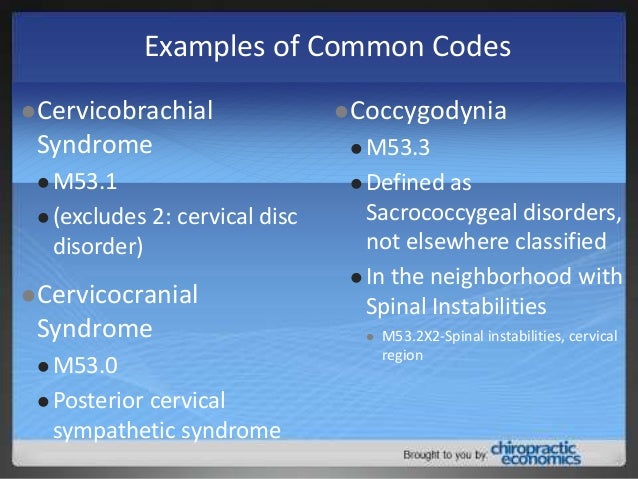
- #Sacrococcygeal disorders not elsewhere classified full
- #Sacrococcygeal disorders not elsewhere classified code
ACP doesn't have access to all insurance claimsĭata, but we do have the publicly available Medicare claims data. Q: What services do internists bill most frequently? Is it only the evaluation and managementĪ: Actually, it's more than the E/M codes. Please check your progress against the ACP Physician and Practice Timeline, online. To assess whether your practice is on track for implementation, It's important to continue to make progress toward implementation of ICD-10. With information and resources to help them prepare for the coding transition. That there will be another delay in response, ACP's position is to provide its members The implementation deadline for ICD-10 remains Oct. E11.359: Type 2 diabetes with proliferative diabetic retinopathy without macular edema.E11.35: Type 2 diabetes with proliferative diabetic retinopathy.E11.349: Type 2 diabetes with severe nonproliferative diabetic retinopathy without.E11.34: Type 2 diabetes with severe nonproliferative diabetic retinopathy.E11.339: Type 2 diabetes with moderate nonproliferative diabetic retinopathy without.E11.33: Type 2 diabetes with moderate nonproliferative diabetic retinopathy.E11.329: Type 2 diabetes with mild nonproliferative diabetic retinopathy without macular.E11.32: Type 2 diabetes with mild nonproliferative diabetic retinopathy.E11.319: Type 2 diabetes with unspecified diabetic retinopathy without macular edema.

E11.31: Type 2 diabetes mellitus with unspecified diabetic retinopathy.Or without macular edema) are as follows: In comparison, the ICD-10 codes describing type 2 diabetes with retinopathy (with With ophthalmic manifestations, and 362.01-362.07, retinopathy. Needed while still providing detailed information.įor example, in ICD-9 the codes for type 2 diabetes with retinopathy are 250.5, diabetes
#Sacrococcygeal disorders not elsewhere classified code
These allow a physician to describe multiple diagnoses by using only 1 code or toĭescribe a diagnosis with its complication. CanĪ: A distinguishing feature of ICD-10 is that it includes “combination codes.” Q: I've heard that ICD-10 combines codes, but I don't understand what that means. I48.2, chronic atrial fibrillation and I48.91, unspecified atrial fibrillation. Specific codes: I48.0, paroxysmal atrial fibrillation I48.1, persistent atrial fibrillation ForĪtrial fibrillation, ICD-9 uses the code 427.31, while ICD-10 uses the following more Low back pain and M53.3, sacrococcygeal disorders, not elsewhere classified.

ICD-9 uses 724.5įor backache, unspecified, while ICD-10 uses the following more specific codes: M54.9,ĭorsalgia, unspecified M54.89, other dorsalgia M54.6, pain in thoracic spine M54.5, In ICD-9, headache is coded as 784.0 in ICD-10, it is coded as R51.

Site (among others) and are alphabetic or numeric and characters 4-6 will cover clinical details such as severity, etiology, and anatomic.characters 1-3 will now refer to the code category.ICD-10 uses codes that are longer (in some cases) than those of ICD-9, following a
#Sacrococcygeal disorders not elsewhere classified full
Numbers random, or do they follow some type of order?Ī: ICD-10 uses 3 to 7 alphabetic and numeric characters and full code titles, but the Q: What are the differences in the structures of ICD-9 versus ICD-10 codes? Are the code Has received from members by offering examples of the codes for common diagnoses. To help internistsīecome even more comfortable with ICD-10, this column will answer questions that ACP The idea of a new code set should be familiar by now to internists.


 0 kommentar(er)
0 kommentar(er)
